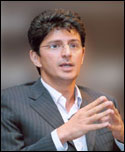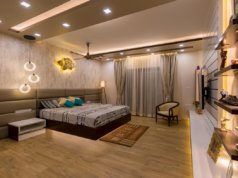 Boman Irani, Chairman & Managing Director, Rustomjee Group
Boman Irani, Chairman & Managing Director, Rustomjee Group
Boman Irani, an engineer with experience in international trade, is a first-generation developer and entrepreneur. Incorporated in 1996, Rustomjee Group has completed about 4 million sq. ft of development and has a development portfolio of approximately 30 million sq. ft in Mumbai which makes it one of the leading real estate developers in and around the city. Boman Irani, in an interview with Renu Rajaram, talks about the significance of green building.
How is the sustainable construction scenario in infrastructure segment?
India is in the midst of a great real estate growth cycle and the need to preserve the environment cannot be over emphasised enough. With the nearly double-digit growth in the economy, there is an urgent need to minimise the use of non-renewable resources.
Urbanisation, industrialisation and commercial growth have put our cities and plants under considerable pressure which needs to be addressed immediately. There has been tremendous pace of development in India in the last decade owing to which there has been rapid depletion of natural resources. While the construction sector is an indicator of a country’s economic development, it also needs to maintain a balance in economic growth and environment sustainability.
According to a McKinsey study, India has the potential to unlock many new growth markets in its cities, including infrastructure, transportation, healthcare, education, and recreation. The report further highlights the need to build between 700 million and 900 million sq. metres of residential and commercial space a year to meet urban demand. To match up the speed of urban expansion, sustainable construction is not an alternative but the only solution for a greener tomorrow.
What are the major contributors to sustainable development?
One of the major contributors to sustainable development is the use of raw materials which can indirectly reduce consumption of natural resources e.g. for interiors, products made of gypsum like dry walls are highly effective as an alternative to bricks, as making of bricks consumes a lot of energy.
Sustainable construction also helps in reduction of carbon emissions and conservation of natural resources like water. Solar energy also helps in saving power consumption.
What are some of the recent technological developments in this area?
There have been substantial advancements in the construction sector and new innovative ways have ensured reduced consumption of resources. There is enough research and innovation going on towards devising strategies and technologies for constructing environment-friendly buildings. Some of the latest technologies in use are MIVAN and slip form technology which reduce dependence on labour by hastening the curing period and reducing consumption of water, and also work towards green compliance. CFL bulbs that use less energy and faucets that use less water while offering maximum cleaning are also innovations towards achieving green building practices.
The strategic designing of buildings, with provision for sewage water treatment plants, rainwater harvesting and provisions for retrofitting more of such equipment later, enhancing the environment-friendly quotient of a building, must be mentioned clearly.
Green buildings are sometimes valued higher than conventional buildings and may even fetch higher rentals.
The construction of a green building usually entails an additional cost of 10 to 15 per cent to the developer. The cost of installing energy saving establishments in a project like installation of a solar panel for heating of water or building a sewage treatment plant does incur additional cost. However, in the long run, the residents reap considerable benefits from it in the form of lower maintenance costs.
The ownership of sustainable buildings results in clear benefits for investors, ranging from drastically lower operating costs to improved marketability, longer lifespans, significantly increased occupant productivity and well-being as well as more stable cash-flows.
As a result, increasing economic return, sustaining the natural environment and protecting social values are not incompatible or mutually exclusive. Also, with higher levels of awareness about the need to be green, the absorption of higher cost element too would be treated as a necessary part of growth process.
Can you talk about your company’s efforts in green building?
Rustomjee is a founding member of Indian Green Building Council (IGBC) and is very proud of its track record in this regard as a lot of thoughtfulness goes into our plans aimed at furthering the conservation of resources through efficient land usage, habitat preservation and restoration, and efficient use of natural resources.
Rustomjee has a vision of contributing to the society through sustainable development that meets the changing socioeconomic needs of the present without compromising the ability of future generations to meet their own needs.
Sustainable construction is at the core of our projects: new-age construction technologies, materials, designs and green approaches that exceed the global standards. We believe in creating a new way of doing business that uses less energy, relies on renewable sources of energy and minimises or eliminates harmful waste products that helps in making our projects smart yet sustainable.
For us, it is not simply the short-term provision of infrastructure that is of prime importance, but planning and designing infrastructure which takes full account of its own impact and its operational needs and use.
The pre-certification received from IGBC for most of our projects is a testament to our thoughtfulness in deploying green technologies and process at every stage of construction. Almost every project of Rustomjee has a certification of ‘Leadership in Energy and Environmental Design’ for USGBC-LEED Certificate that will have a minimal impact on environment.











